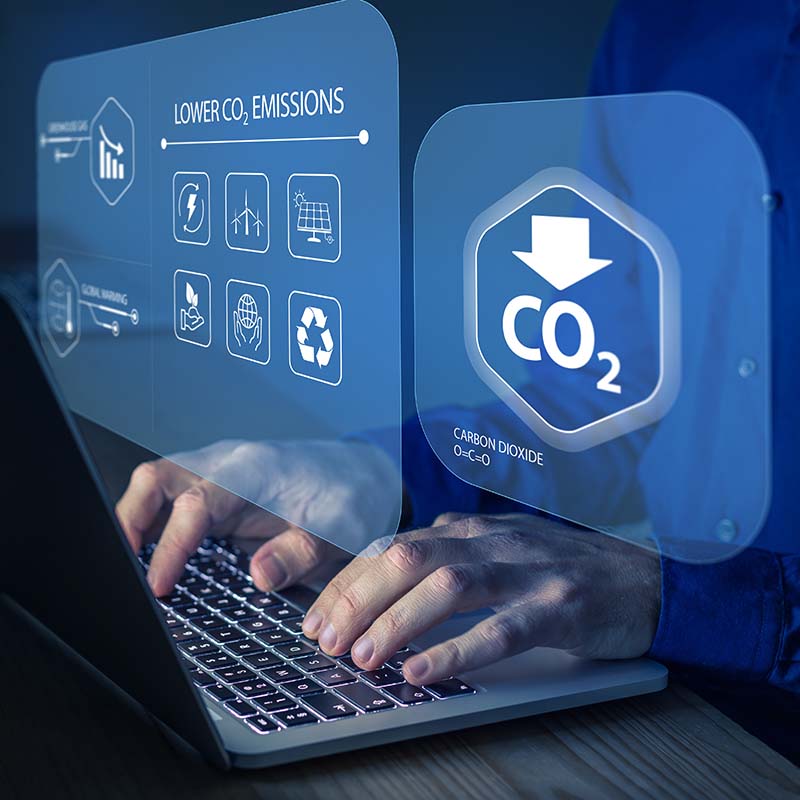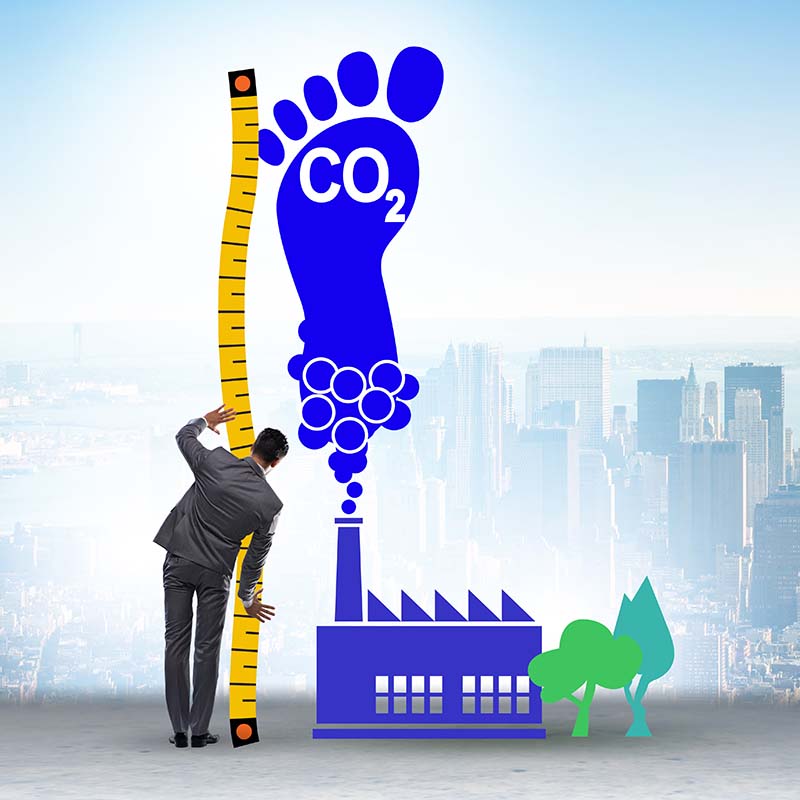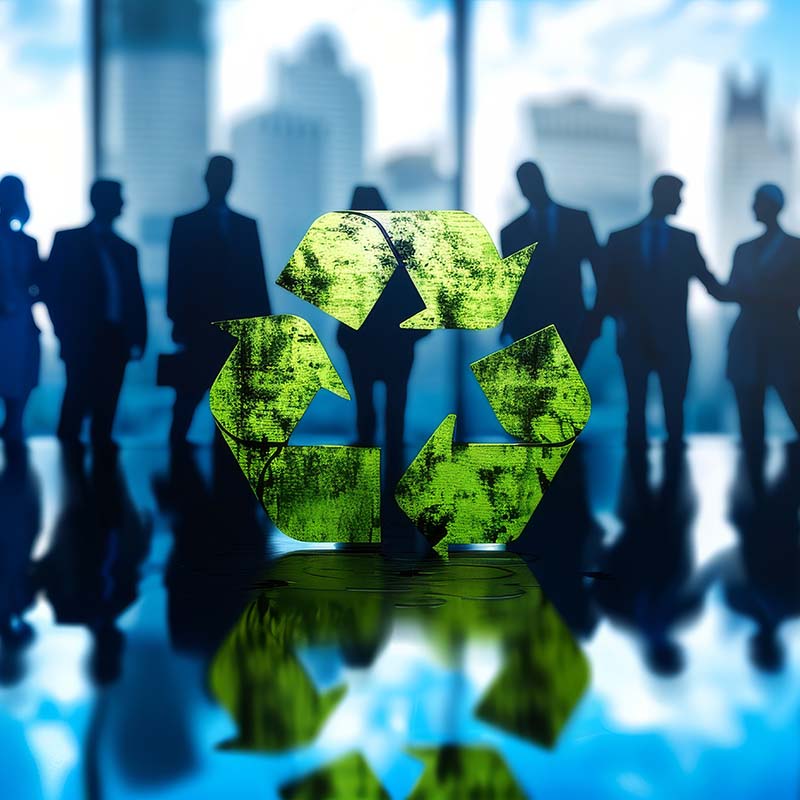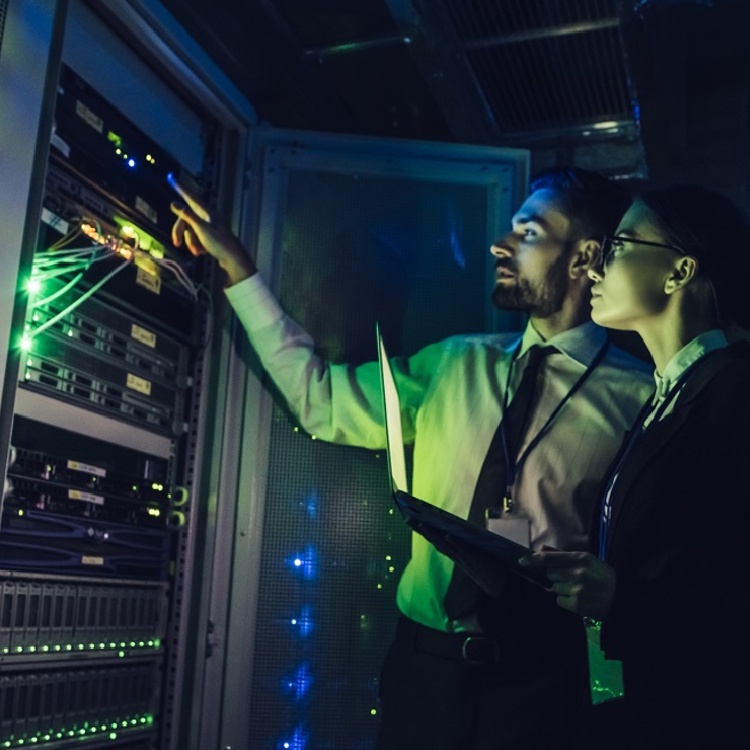Regulations and corporate responsibilities around sustainability are getting more complex as the world begins to embrace the critical need to take action in the face of climate change.
In this Tech Barometer podcast segment, experts in modern data center technologies and sustainability provide valuable insights for building IT sustainability strategies.
"When I started in this space, a lot of very large companies mostly had initiatives around this. And it was kind of seen as a nice-to-have," said Andrea Osika, marketing manager of sustainability at Nutanix.
But that's changed. She points out that today, it's not uncommon to see a sustainability tab in a brokerage app when buying stocks. Certain aspects of corporate operations are now subject to sustainability rules. It's become a core business strategy.
"It seems like the goalpost is almost moving as we try to find a way to standardize and communicate all of these metrics. And one way is through an ESG report," she said, citing Nutanix's annual Environmental, Social and Governance report. The data in the report significantly reflect the company's IT operations.
IT infrastructures, especially data centers, are substantial energy consumers and carbon emitters. However, IT also holds the key to potential solutions.
"On the one hand, we're this big consumer of energy that's being asked to consume less," said Mat Brown, senior technical marketing engineer at Nutanix. "And on the other hand, we're also the platform where they want to do all of this smart, intelligent AI and ML stuff to improve the world around us."
"What we're starting to learn is that everything has a footprint and everything adds up," he said.
According to Harmail Chatha, senior director of global cloud operations, by consolidating hardware, Nutanix has managed to reduce its power footprint by 35%. This demonstrates the tangible benefits of reducing rack space by modernizing with a software-defined infrastructure and taking steps to reduce power consumption.
"We consolidated our racks," he said. “We're populating our racks with 92 nodes. That is 23 blocks in a single rack. And what we gain from that is 68% more efficiency from an OpEx, CapEx perspective."
Transcript:
Mat Brown: There is a lot of regulation coming, a lot of legislation.
Andrea Osika: Between 2021 and 2022 there was an 80% increase in regs that encompass ESG.
Harmail Chatha: If you're going to build a sustainability strategy, budget should be the starting point. By consolidating the hardware, you're reducing your power footprint by 35%.
Jason Lopez: What you're about to hear are the highlights from a breakout session for IT pros who attended the Nutanix .NEXT conference in Chicago. The speakers are from Nutanix, Andrea Osika, who is laser-focused on sustainability in ESG, Mat Brown, technical marketing manager, along with Harmel Chatha, who leads global hybrid multi-cloud operations. They work on sustainability issues, which are reported in Nutanix's annual Environmental, Social, and Governance report. This is the Tech Barometer Podcast. If your IT organization is trying to navigate ESG, this segment sheds light on IT sustainability trends and insights Nutanix has gained from evolving its own sustainability efforts. They reveal their experiences in adapting to various waves of change, including uptime and costs, security and regulations, particularly around carbon compliance and the management of greenhouse emissions through FinOps and AIOps. Andrea Osika starts off with this: as sustainability becomes increasingly central to business operations and strategy, IT professionals and executives will be expected to adapt to, in fact, their performance often measured by, a focus on ESG.
Andrea Osika: When I started in this space, a lot of very large companies mostly had initiatives around this. And it was kind of seen as a nice-to-have. But if you think about the definition of sustainability and balancing today versus tomorrow, there's business value that's involved. And it turns out that companies who set short-term goals and balance those with sustainability metrics have actually outperformed the market in the last 10 years. So this has made investors take notice. Depending on what app you use to look at your publicly traded stocks, you might see now a sustainability tab. And we're going to add on top of that an energy crisis and more environmentally-minded customers and even talent that your organization wants to attract and hire and then even retain. They're all paying attention to what different organizations are doing in this space, particularly in Europe, in the UK, over in Asia. There are all kinds of pending and imposed regulations that are coming. I have been attending so many webinars and working with consultants to try and keep up. It seems like the goalpost is almost moving as we try to find a way to standardize and communicate all of these metrics. And one way is through an ESG report. I know I throw acronyms around. I've said it a couple of times, but environmental, social, and governance.
Jason Lopez: The 2022 Enterprise Cloud Index Report, or ECI, showed that 95% of IT professionals saw sustainability becoming more crucial in business decisions. The more recent 2024 ECI report shows IT pros are actively integrating sustainability strategies with their IT modernization efforts. Many organizations have become more data-driven about sustainability. 51% of organizations say they improved their ability to identify areas for reducing waste. 44% indicate they improved their ability to monitor and measure greenhouse gas emissions, as well as their carbon footprint. In the breakout session, Nutanix experts explained how the environmental impact of technology goes deeper than power usage and metrics. There's the lifecycle of IT hardware, starting with the mining of metals and minerals, the manufacturing process, packaging, shipping, the management of devices in an IT setting, and the eventual disposal of the devices. Mat Brown identified a starting point for a business case. Dive into getting educated about sustainability facts, build relationships with like-minded individuals and organizations, plan and implement, identify the metrics relevant to the organization's operations, and automate the measurement of those metrics.
Mat Brown: IT is both a big part of the problem, particularly for companies that aren't involved in manufacturing. They are often emitting the most carbon emissions through the use of their data center and other IT services. But technology is also, of course, a massive part of the solution, potentially. Whether it's digital transformation, removing paper processes, automating lots of operations, smart building management to be more energy efficient, improving logistics and mapping out routes and things like that. On the one hand, we're this big consumer of energy that's being asked to consume less. And on the other hand, we're also the platform where they want to do all of this smart, intelligent AI and ML stuff to improve the world around us. And what we're starting to learn is that everything has a footprint and everything adds up.
Jason Lopez: As Andrea Osika talks about frameworks used for measuring power consumption and measuring carbon emissions, she introduces the concept of scope. Each scope, from Scope 1 to Scope 3, classifies emissions based on their source and whether emissions are direct or indirect.
Andrea Osika: Scope comes from the greenhouse gas protocol, which is the basis for all carbon emissions reporting worldwide. It's essentially the gold standard for how companies report their emissions. And it's broken down into three categories. They are in the order of descending control of the reporting organization. So if we start at the top, those are the direct emissions. That's scope 1. And these are the emissions that are released into the air, typically from combustion, from burning something. And if you think about what that means in real terms, that's like if your organization has a fleet of vehicles or the natural gas that's used to heat your facilities. Those are two kinds of concrete examples. Scope 2 are indirect emissions. And they are a result of energy that is used to produce power. So typically this is in the form of steam or electricity. So electricity in your organization's facilities and your data centers. And then scope 3 is the easiest one for me to explain. But it's the most challenging. Even the greenhouse gas protocol tells us that this is something that they need to continue to work on. But it is literally everything else. This is your value chain. This is your hardware, your OPEX, your CAPEX. This all falls into scope 3. This is how your organization will report your emissions. And if you need an easy way to remember scopes 1, 2, and 3, here's how I've learned. The energy that you burn. The energy that you buy. Everything else.
Jason Lopez: Focusing on scope 2 and scope 3 emissions is where Nutanix and other tech companies see the most opportunity to influence their overall carbon footprint, either through improving energy efficiency or by addressing the broader impacts of their products and services on the environment.
Mat Brown: How far does the rabbit hole go? Well, it certainly goes to embedded emissions in the hardware that are built and shipped to a facility. That's one thing. Any cables you buy to plug in. It also includes any cloud services you may use, SAS services, bare metal services, and things like that. Those are probably a lot more tangible that you can get a feel of. Some providers also will be able to feed back to you the emissions associated with those services provided. Others less so. How their methodologies work probably are on an ongoing basis, but often they're estimated using monetary values or something like that. Scope 2 is really where we talk a lot more to our customers about. So when a customer has their own data center, the electricity used to power that IT in the rack, that is a scope 2 emission. Somebody somewhere is burning fuel, gas, coal, or even renewable energy comes with a carbon footprint. That all adds up to power the IT equipment that we have running in our data centers.
Jason Lopez: This is where Harmel Chatha comes in. He's responsible for running Nutanix's hybrid multi-cloud IT operations. He explains how Nutanix and its customers leverage software-defined hyper-converged infrastructure, which brings operational efficiencies and helps manage and scale resources wisely. Chatha talks about using fewer resources, generating less waste, and avoiding unnecessary complexity by relying on modern IT solutions.
Harmail Chatha: We reduced our infrastructure footprint. We consolidated where we could. We got away, not that we ever had, three-tier architecture as well. We only deploy hardware that's required. It's not deployed in a safe manner on the over-provision just to be safe that I have enough capacity. Step two of it is really eliminating waste and over-provisioning. You only buy what you need, you only deploy what you need to deploy, and you only run the services that need to be run. And step three is really the benefits of step one and two, which leads to carbon reduction. That means you can deploy your applications anywhere you like across any region, wherever the power is cheapest at that given point in time. Now that we've got some context around what can be done, let's apply to what we have done. So Nutanix is about 12 years old. We inherently are sustainable from the HCI perspective because we integrate, converge, compute, storage, and networking into our stack. Since 2010 when Nutanix started, we already had a sustainable footprint, whether we knew it or we didn't. Nobody was really measuring sustainability at that point. But then in 2018, we took a bigger step. We revamped our data center strategy from our data center where we initially started to a new strategy where we consolidated our racks. We're populating our racks with 92 nodes. That is 23 blocks in a single rack. And what we gain from that is 68% more efficiency from an OpEx, CapEx perspective, and consolidation perspective. If we are already an HCI stack, we're already 100% virtualized in our environments. There is no bare metal one-to-one environment in any of our data centers. The last couple of years, we voluntarily started reporting our ESG reporting. And this is so complex. So for us, sustainability has been and will continue to be a journey, not just a one-off set destination that we can check off now that we've done our ESG report. We're super sustainable. We're not by any means. That first year, we only focused on Scope One, Scope Two, and Scope Three related to our data centers and related to our offices' total power consumption.
Jason Lopez: Understanding what to measure means identifying the relevant metrics that would accurately reflect the company's impact on the environment. Then it's determining how to measure. No small feat given the number of locations and data centers. To manage and analyze this vast amount of data, his team consolidated the information into Google Sheets as a starting point. Partners with the expertise to measure emissions helped. Chatha says it seemed they had a baseline.
Harmail Chatha: But no, we didn't. The second year, we learned more. We gained a better understanding of how to measure. The data was more accurate, so hence our emission reporting was much more accurate. But in year three of our ESG report, we implemented a SaaS platform that actually aggregates in real time all of our power consumption from our leased offices and our data centers. So we can go to the platform and actually check it out in real time which location is utilizing how much power and what the footprint of that is. We got away from the Google Sheets. We've got a platform now. Data is more accurate. Our emissions calculation is more accurate.
Jason Lopez: A strategic approach to sustainable IT begins with the optimization of the infrastructure platform. As Mat Brown describes, it offers the potential for significant environmental benefits and supports things like the deployment of sustainable applications and better management of hardware life cycles.
Mat Brown: If you can use less hardware, then that obviously is a good thing for embodied emissions. There's less power supply potentially in that hardware. That's another good thing for reducing power consumption. But if you think about how you can reuse or repurpose IT equipment, there's recycling programs in place. You have the choice of hardware vendor, even down to choice of components, whether that's an Intel CPU or an AMD CPU. You can look at their various properties, features, et cetera, and see what fits your business requirements around your hardware life cycle and circularity the best. So take up that choice where you can.
Jason Lopez: Different electricity grids in different countries or regions have different carbon intensity. Carbon intensity refers to the amount of CO2 produced per unit of electricity generated. Grids that rely heavily on coal or oil have a much higher carbon intensity compared to renewable sources like wind, solar, or hydro.
Mat Brown: For example, if you had a data center in Poland and you were able to magically shift it up to Sweden where there's a lot more renewable energy with a lot lower carbon intensity, that could be a 30 times drop in the use phase emissions for that platform. In order to work out how much IT platforms emit or are responsible for in terms of carbon emissions, you'll need to know that carbon intensity grid factor, which you can get from a variety of sources. And you'll also want to know something called the power usage effectiveness of your facility. Those tend down towards one, the lower being the more efficient. But it's not just all about the PUE. Reducing power at the rack can be much more effective than just shrinking a few percentage points on the power usage effectiveness of the data center. But being able to place your workload potentially where it's going to run in the most efficient way is very key to this whole physical location, power, and environment.
Jason Lopez: He said Nutanix emphasizes the critical dynamic between infrastructure and power usage. Modernizing data centers increases flexibility, scalability, and encourages more innovation in IT while consuming less power.
Mat Brown: Because that platform's all integrated in a single pane of glass, you can then start working on your operational efficiency more and more, optimizing the actual demand, optimizing what consumers of IT are asking for, doing right sizing, using AIOps for improvement, reducing waste, oversized VM everywhere, implementing show back, charge back, or even recently I heard the term at a FinOps discussion, shame back, to shame people who weren't implementing their optimizations effectively. You can put the impact in front of the user, the application owner, and show them what they're responsible for and feed back to them, then they can take on more responsibility for driving optimization.
Jason Lopez: Mat Brown is Senior Technical Marketing Engineer at Nutanix. Harmail Chatha is Nutanix's Senior Director of Global Cloud Operations. Andrea Osika is Marketing Manager of Sustainability at Nutanix. What you heard were the highlights from a stage presentation on sustainability given during the .NEXT conference in Chicago in 2023. This is the Tech Barometer podcast. I'm Jason Lopez. Tech Barometer is produced by The Forecast. For more podcasts and stories about technology and the people in tech, you can find it at theforecastbynutanix.com. That's theforecastbynutanix, all one word, dot com.
Editor’s note: Learn more about Nutanix's sustainability IT solutions and Nutanix’s ESG efforts.
Jason Lopez is executive producer of Tech Barometer, the podcast outlet for The Forecast. He’s the founder of Connected Social Media. Previously, he was executive producer at PodTech and a reporter at NPR.
Ken Kaplan contributed to this story.
© 2024 Nutanix, Inc. All rights reserved. For additional information and important legal disclaimers, please go here.









